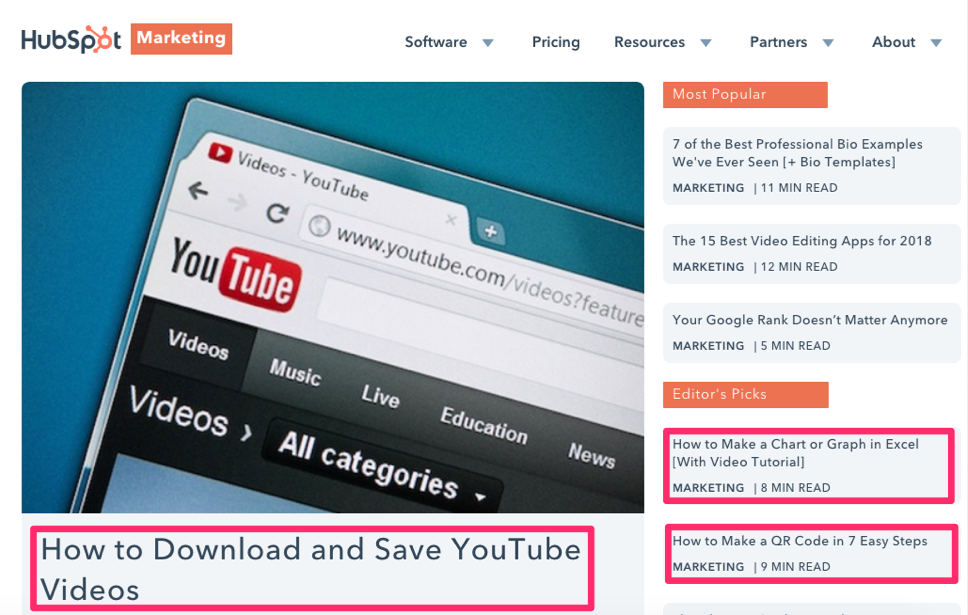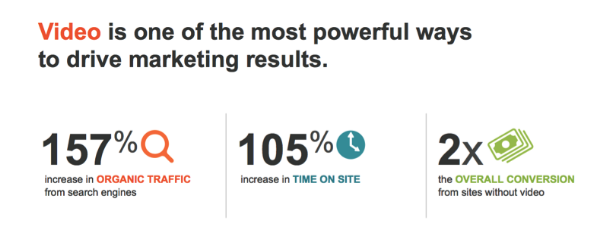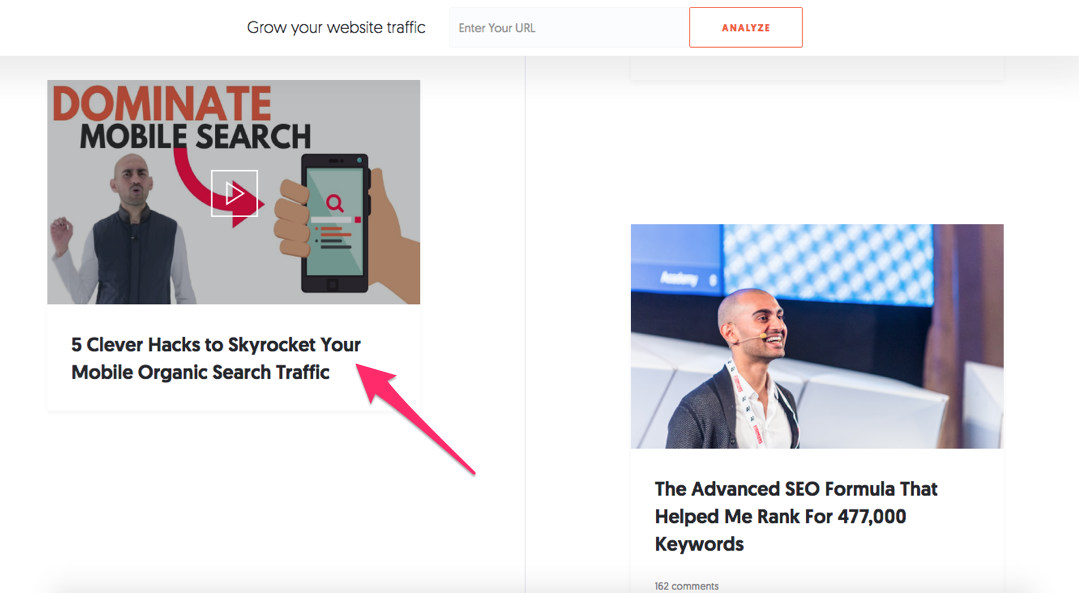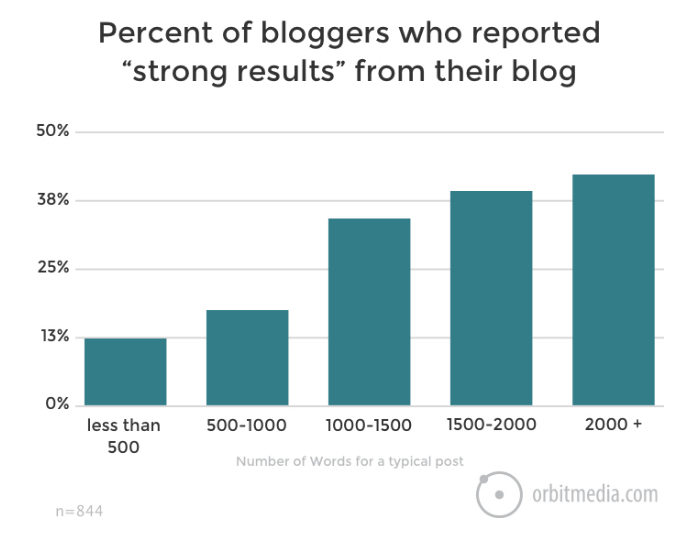Those of you who know me know how much I promote blogging.
I’ve been doing it for years, and I use blogging as a tool for lead generation. But having a blog has many other benefits as well.
Driving more traffic to your website is arguably one of the most important reasons for running a blog.
Think of it like this. How often would you say the same person comes back to your website?
Depending on the nature of your site and your brand, it may not be too often. This is especially true if you have an ecommerce site.
People don’t want to buy things from you on a daily basis. Sure, you may have had some success by implementing customer loyalty strategies, but even the most loyal customers probably won’t visit your site every day.
Blogging gives people a reason to come back to view your site on a regular basis.
If you can establish a steady audience of readers, they will continue to visit your site to read your blog. Once they’re on the site, they will be more likely to convert into buyers.
Research shows that the publishing frequency of your blog posts has a direct impact on customer acquisition:

But if you want to publish posts frequently, you’ll need to mix up your content.
Blogging about the same thing over and over again is boring. That’s why you need to learn how to write different posts to keep your readers interested and engaged.
Here are the top 11 types of posts that will drive traffic to your website.
Use this guide as a reference so you can always come up with fresh ideas for your blog.
1. Informative guides
Stick to the basics. Informative posts or “how to” guides are some of the most popular types of posts on the Internet.
You have to understand how people search for content online. If you’re trying to drive traffic to your website organically, your blog posts need to be SEO-friendly.
When someone wants to learn how to do something, they will literally type “how to” into the search engine to find information about it.
If your post appears as a top result, you’ll get more traffic to your site. But to get ranked toward the top of the list, your guides must be helpful.
Getting more people to read your posts and spend time on the page will improve your search ranking.
Here’s a great example of these types of posts on the HubSpot website:

As you can see, three of the top six featured posts on the homepage of its marketing blog explain how to do something.
If you’re writing these types of posts, you need to make sure your explanation is clear.
Describe each step in a separate subsection with its own subheading. Take screenshots, and use boxes, arrows, and other annotations so readers can see what you’re talking about.
2. Video blogs
If writing comes naturally to you, it will help you tremendously when it comes to blogging.
But some people have trouble translating their thoughts into words on the page. If you think you’re a better speaker than writer, you may want to consider running a video blog.
As a marketer, you need to recognize how video content drives results:

Video content will increase your organic search traffic by 157% and also increase the time people spend on your site.
People probably won’t read your posts word for word. They’ll just skim through them.
But videos keep people engaged. Your video blogs have seemingly endless opportunities.
The content of each video is completely up to you. You may even consider turning an informative “how to” post, which I previously discussed, into a video tutorial.
Video blogs don’t need to stand on their own. You can mix in video posts with your conventional written blog posts.
Here’s an example of how I do this on the Neil Patel blog:

As you can see, the post on the left is a video blog. But the blog published on the right is a regular post.
3. Guest posts
Guest blogging has tons of benefits. If websites give you the opportunity to blog for them, don’t turn them down.
Bloggers have the wrong mentality when it comes to guests posts. I see this problem all the time.
They would much rather focus on producing new content for their own sites as opposed to someone else’s.
But they don’t realize how writing for another site can benefit them. Allow me to explain.
The people who currently read your blog are already familiar with your voice and content. That’s what keeps them coming back.
However, other people might also enjoy your content, but they don’t know you yet. Getting featured on another website through a guest post will expose you and your brand to a new audience.
If you can impress these readers, they may be more likely to visit your site in the future.
Plus, you can build backlinks through your guest posts that drive more traffic to your website and ultimately improve your SEO as well. This will help you get more organic search traffic moving forward.
4. Long blogs
If you’re writing short posts just to save time and put out as much content as possible, it’s probably not working to your advantage.
Your blog posts should be long.
There are a few reasons for this. First of all, the length of your content is linked to search engine optimization.
Longer posts will give you the opportunity to add more links, images, and keywords to your posts. Google will reward you for this.
Furthermore, a higher percentage of bloggers who publish longer posts reported stronger results from these efforts:

If you are not taking the word length into consideration when you’re writing, you need to reevaluate your strategy.
I’d recommend publishing content that is 1,500 words at a minimum. But you can even shoot for 2,000 or 2,500+ words for certain posts.
Again, people won’t read your posts word for word. So don’t have really long paragraphs in these posts.
Use short sentences, headers, and visual elements to break up your content. This is especially important for longer blog posts.
5. Lists
Lists are another common type of blog post.
I use lists all the time. In fact, what you’re reading right now is one of my lists.
One of the reasons why list posts are so popular is that your readers know what to expect. They can scroll through each point on the list without having to read through the entire thing.
Readers like it when content is straightforward and organized.
Vary the formula for writing titles of list posts. Here are some examples to show you what I’m talking about:
- 21 Ways to Prepare Chicken
- the Top 6 Types of Bicycle Tires
- How to Travel on a Budget with These 13 Tips
The list goes on and on, pun intended. But you get the point.
Changing the position of the number within the title of your list ensures your content doesn’t appear stale. If someone looks through your blog and sees that each title starts with a number, they may not be interested in reading it.
Switch up the numbers as well. While top ten lists may be popular, they can get boring too.
Google the topic before you start writing. Try to come up with a list longer than other lists in the search query. This will give you an advantage over your competitors.
6. Product reviews
Reviewing products and services is another great way to drive traffic to your blog.
As we’ve said before, you need to understand how people search for content on the Internet. If they are interested in a product, they’ll want to read reviews about it.
Here’s an example of a recent blog post from TechRadar that reviews multiple products in the same post:

There are a few different ways to decide what products to review.
For starters, you could review items your company sells. The only issue with this strategy is that people will know your opinion is biased. You won’t post an unfavorable review about something you’re selling.
But if your blog covers a specific industry, you can review new releases. Make sure the reviews are relevant.
Refer back to the example above. The article is reviewing the most recent iPhone products. It wouldn’t make sense to review models released five years ago.
If you decide to review products on a regular basis, establish a flow to such posts so your readers know what to expect.
Start with a product overview, and explain what the product does. Then, you can discuss specifications and other details. List the price and where it can be purchased.
The review should have some form of a pros and cons list. Reviews should ultimately express your stance on the item. For example, you can explain which people would benefit most from the product.
7. Infographics
As I’ve said before, you need to incorporate visual content into your blog posts.
But you can take this strategy to the next level by publishing blog posts that are almost exclusively infographics.
Creating custom infographics can help you build more backlinks as well. Here’s why.
Other websites are always looking for content that will help improve their blog posts. If you can come up with relevant, accurate, and visually appealing infographics, these sites will use them in their blogs.
As a result, you’ll get credit for the image source.
People who see your infographics on other sites may be inclined to click the link to visit your website. Furthermore, these links will also improve your SEO ranking, which I’ve previously discussed.
8. Stories
Learning how to tell a story is an art. Once you master this skill, the quality of your blog posts will improve.
A great story will keep your readers on the edge of their seats.
You need to understand the impact storytelling has on our brains:

When readers have an emotional response to your story, dopamine gets released from their brains.
Use this information to your advantage. The best stories are written to elicit some type of emotion, whatever that may be.
The choice is up to you. Maybe you want your readers to feel sad or angry while they’re reading your posts. And some of you may prefer to evoke joy, surprise, or love.
If you can make your readers feel emotions, they’ll be more likely to continue reading the blog.
As a result, they’ll come back to read more in the future.
Depending on the nature of your story, it can also generate traffic based on curiosity alone. For example, if I saw a blog post that said something like “How I Caught a Shark With a Pair of Jeans,” I would be very inclined to click on it to find out what happened.
9. Controversial posts
Controversy can spark some interest. This interest will lead to website traffic.
That said, you need to tread carefully with this approach.
Depending on what stance you take on a particular topic, you could potentially destroy your brand’s image. You don’t want this strategy to backfire.
It’s best to avoid topics such as race, religion, and politics. Don’t say anything that would offend someone.
When writing a controversial blog post, try not to pick a side. Instead, bring up the issue and try to generate a discussion in the comments section.
Truthfully, I wouldn’t recommend this strategy to all websites. But for some of you, this type of blog post may fit well with your brand image and target audience.
10. Breaking news
Use your blog to discuss breaking news topics.
Don’t get me wrong, I’m not saying you should try to compete with actual news outlets. But you can still write about recent events.
When it comes to breaking news, timing is everything. Being the first one to break a story isn’t always the best.
Sometimes you’re better off waiting to publish your content until all the facts are straight. You don’t want to get a reputation for posting unreliable information.
Here’s an example of a news story published on the TechCrunch blog:

Make sure your news story is relevant to your business.
For example, let’s say you run a fashion blog. A breaking news story about a technological advancement isn’t related to your brand, so don’t write about it.
11. Data-driven guides
Whenever you’re writing an informative guide, back it up with statistics.
Use data only from authority sources, and give them credit for the information.
Adding data to your guides shows your readers your content is legitimate.
You didn’t just pull ideas out of thin air. You took the time to conduct research and then formed opinions based on your findings.
I use this strategy all the time. Before I take a stance or give advice, I find numbers to back up my claims.
If you are interested in doing original research, consider highlighting your case studies in a blog post.
This will help you get traffic from organic searches as well as through backlinks whenever another site uses your study as a source of information.
Conclusion
Your website needs a blog. But having a blog alone won’t necessarily drive traffic to your website.
Producing the same type of content for each post is boring and won’t deliver the results you’re looking for.
That’s why you need to learn how to write different types of blog posts.
Some of your posts may not even need to be text-heavy. You can use video blogs and infographics to enhance your content.
Anyone with a blog can benefit from using this guide as a reference. Adding these 11 types of posts to your website will increase your overall site traffic.
What types of posts are you using to drive traffic to your website?
from Quick Sprout https://ift.tt/2MFzYCu
via IFTTT
